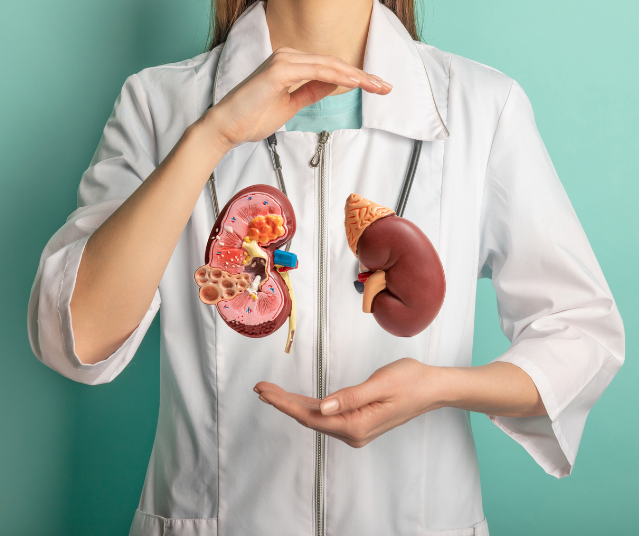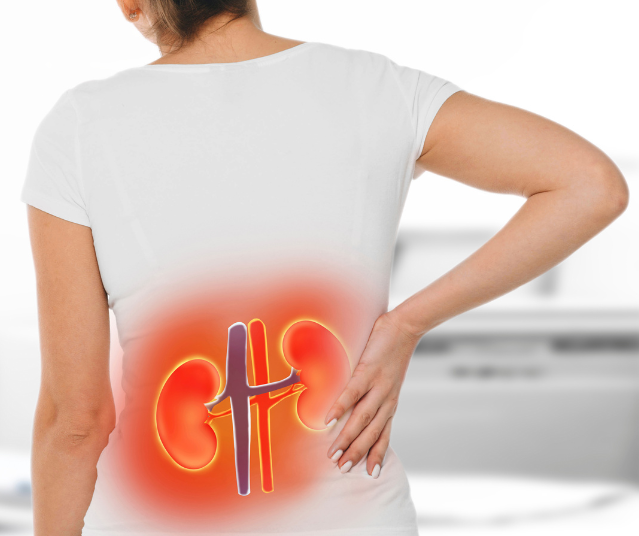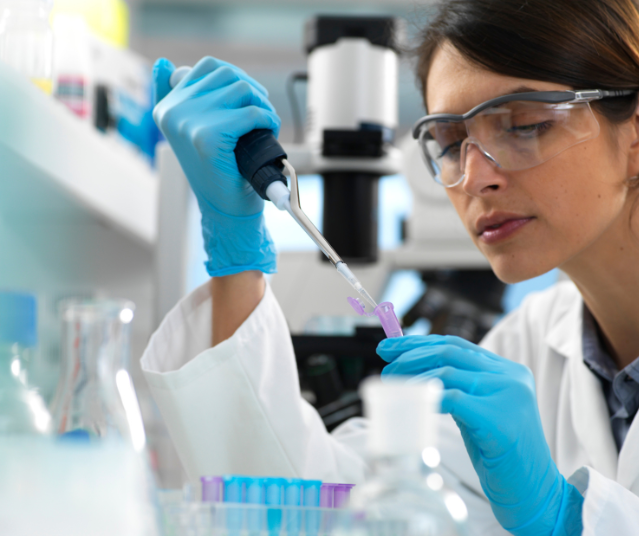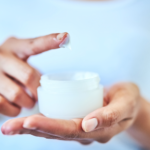Understanding Creatinine Levels and Kidney Health

Creatinine is a critical indicator of kidney health. Produced by muscle metabolism, creatinine is filtered out of the bloodstream by the kidneys. However, when kidneys aren’t functioning properly, creatinine levels in the blood can increase, signaling potential issues. Recognizing What is the Creatinine Level for Stage 3 Kidney Disease is vital for people at risk of or diagnosed with kidney disease, as it helps in managing health and understanding the disease’s progression.
Stage 3 kidney disease is a midpoint in the progression of kidney damage, indicating moderate kidney dysfunction. Individuals in this stage must carefully monitor creatinine levels, symptoms, and lifestyle choices to delay further decline.
Understanding creatinine levels is crucial for assessing kidney health, especially in conditions like Stage 3 kidney disease. So, What is the Creatinine Level for Stage 3 Kidney Disease ? Generally, Stage 3 is characterized by moderate kidney damage, with a creatinine level often ranging higher than normal due to reduced filtration efficiency.
While exact values can vary based on age, sex, and muscle mass, elevated creatinine in Stage 3 usually corresponds with a Glomerular Filtration Rate (GFR) of 30–59 mL/min. Monitoring these levels helps doctors assess progression and manage treatment plans to support kidney function.
Kidney Disease Stages and Creatinine Ranges
Kidney disease progresses through five stages, each defined by the glomerular filtration rate (GFR) and creatinine ranges. The GFR is a measure of how well kidneys filter blood, which is essential for identifying kidney function stages. What is the Creatinine Level for Stage 3 Kidney Disease, on the other hand, help monitor waste buildup in the blood, a consequence of reduced kidney function.
Understanding kidney disease stages and their corresponding creatinine ranges is key to managing kidney health. For those wondering, “What is the Creatinine Level for Stage 3 Kidney Disease ?”
it typically falls within a specific range that indicates moderate kidney function decline. In Stage 2, creatinine levels generally show a glomerular filtration rate (GFR) between 30 and 59 mL/min, indicating the kidneys are functioning at about 30-59% of their normal capacity.
Monitoring creatinine and GFR levels helps track disease progression, guiding treatment to slow further damage and manage symptoms effectively.
Read More : Belly Fat Exercises
Stage 1 and Stage 2 Kidney Disease
In the early stages of kidney disease (Stage 1 and Stage 2), creatinine levels may still fall within a normal range. However, individuals might notice minor symptoms or irregularities in their lab results.
- Stage 1: In this stage, kidney damage is minimal, and the GFR remains at 90 mL/min or higher. Creatinine levels are typically normal but require monitoring.
In understanding kidney disease progression, many people ask, “What is the Creatinine Level for Stage 3 Kidney Disease ?” This is often to compare it with Stage 1 kidney disease, where kidney function is only mildly decreased.
In Stage 1, creatinine levels typically remain within or near normal ranges, as the kidneys are still largely effective in filtering waste. However, as kidney disease progresses to Stage 3, creatinine levels rise due to reduced filtration.
Monitoring creatinine levels over time can help detect early changes, making it crucial for managing Stage 1 kidney disease and slowing progression to more advanced stages.
- Stage 2: The GFR is slightly reduced to 60-89 mL/min, indicating early kidney damage. Creatinine levels may begin to rise slightly, though they often remain within the normal range.
What is the Creatinine Level for Stage 3 Kidney Disease is an early stage where kidney function begins to decline, but symptoms may still be mild or unnoticeable. In this stage, monitoring creatinine levels is crucial, as they help assess kidney function over time.
What is the Creatinine Level for Stage 3 Kidney Disease ? typically range from 1.5 to 1.9 mg/dL (or higher, depending on specific lab references), indicating more significant impairment. By keeping track of these levels, individuals in Stage 2 can proactively manage their health to potentially slow the progression to Stage 3 and beyond.
What is the Creatinine Level for Stage 3 Kidney Disease ?
Stage 3 is the stage where moderate kidney damage is evident, and GFR declines significantly. At this stage, creatinine levels increase, often ranging from 1.4 to 2.0 mg/dL, though levels may vary based on individual health and demographic factors.
For those wondering, What is the Creatinine Level for Stage 3 Kidney Disease ?, it typically indicates moderate kidney damage.
- Stage 3a: In Stage 3a kidney disease, understanding creatinine levels is essential, as they help assess kidney function. Typically, creatinine levels in this stage range between 1.4 to 1.9 mg/dL in women and 1.5 to 2.1 mg/dL in men, though these can vary slightly based on age, body size, and muscle mass.
At Stage 3a, the glomerular filtration rate (GFR) falls between 45-59 mL/min, indicating moderate kidney damage. Regular monitoring of creatinine levels helps in managing kidney health, enabling early interventions and lifestyle adjustments to slow disease progression.
- Stage 3b: In Stage 3b kidney disease, creatinine levels are typically elevated, reflecting a moderate decrease in kidney function.
Although creatinine levels vary between individuals, they generally range from 1.5 to 3.0 mg/dL in this stage, depending on factors like age, gender, and muscle mass.
Stage 3 kidney disease is categorized into two sub-stages: 3a and 3b, with Stage 3b representing a more advanced decline in kidney function. This stage typically corresponds to an estimated glomerular filtration rate (eGFR) of 30-44 mL/min. Understanding What is the Creatinine Level for Stage 3 Kidney Disease is can provide valuable insights into kidney function and help guide treatment decisions. Regular monitoring of creatinine levels is crucial for managing the condition, as it assists in making necessary lifestyle and medical adjustments to slow further progression of the disease.
At this point, symptoms become more noticeable, and healthcare providers emphasize lifestyle adjustments, dietary changes, and possibly medications to manage the disease. Regular creatinine monitoring is essential in this stage, as it allows individuals to track disease progression and adjust treatments.
Stage 4 and Stage 5 Kidney Disease

As kidney disease progresses to Stage 4 and Stage 5, creatinine levels rise significantly, and kidney function becomes severely limited.
- Stage 4: The GFR is between 15-29 mL/min, with creatinine levels ranging from approximately 2.1-5.0 mg/dL.
For individuals with stage 4 kidney disease, creatinine levels are generally higher than those seen in stage 3, indicating a more advanced decline in kidney function.
In Stage 3 kidney disease, creatinine levels typically range from 1.5 to 3.0 mg/dL, although this can vary based on factors like age, gender, and body size. Monitoring What is the Creatinine Level for Stage 3 Kidney Disease is can help assess the severity of kidney function decline. In contrast, in Stage 4 kidney disease, creatinine levels generally exceed this range, indicating more significant kidney impairment.
Monitoring creatinine and other kidney function markers closely is crucial in stage 4, as it helps guide treatment plans aimed at slowing disease progression and preparing for potential interventions like dialysis or transplant.
- Stage 5 (End-Stage Renal Disease): The GFR drops below 15 mL/min, and creatinine levels exceed 5.0 mg/dL. This stage often requires dialysis or a kidney transplant.
In stage 5 kidney disease, also known as end-stage renal disease (ESRD), kidney function is severely reduced, and creatinine levels are significantly elevated.
Creatinine levels in What is the Creatinine Level for Stage 3 Kidney Disease, by comparison, are generally lower, often ranging between 1.5 and 3.0 mg/dL depending on factors like age, sex, and muscle mass. However, in stage 5, creatinine levels typically exceed this range substantially due to the kidneys’ inability to effectively filter waste.
Patients with stage 5 kidney disease often require dialysis or a kidney transplant to manage waste levels and maintain health.
The Creatinine Level Chart for Kidney Health
Monitoring creatinine levels through a creatinine level chart can help patients and healthcare providers understand kidney function over time. Here is a simplified chart to reference the general range of creatinine levels associated with each stage of kidney disease:
| Kidney Disease Stage | GFR Range (mL/min) | Typical Creatinine Range (mg/dL) |
| Stage 1 | 90+ | 0.6-1.2 |
| Stage 2 | 60-89 | 0.6-1.3 |
| Stage 3 | 30-59 | 1.4-2.0 |
| Stage 4 | 15-29 | 2.1-5.0 |
| Stage 5 | <15 | >5.0 |
Symptoms of High Creatinine Levels

High creatinine levels in the blood can indicate reduced kidney function, often seen in conditions like Stage 3 kidney disease.
At this stage, kidney function has declined moderately, with creatinine levels typically ranging from 1.4 to 1.9 mg/dL in women and 1.5 to 2.1 mg/dL in men, though these numbers can vary based on individual factors.
Common symptoms associated with high creatinine levels include fatigue, swelling in the legs and ankles, difficulty concentrating, and decreased urine output. Monitoring creatinine levels is essential for managing kidney health, especially for those with chronic kidney disease, as it provides insight into the kidneys’ ability to filter waste effectively.
Rising creatinine levels often accompany declining kidney function. While symptoms vary by individual, the following are common signs of high creatinine levels, especially in What is the Creatinine Level for Stage 3 Kidney Disease and beyond:
- Fatigue and Weakness: When kidneys fail to remove toxins effectively, the buildup in the bloodstream can cause fatigue and a general feeling of weakness.
- Swelling or Edema: Fluid retention can cause swelling, particularly in the hands, feet, and face. This occurs because damaged kidneys can’t filter and balance fluids efficiently.
- Nausea and Vomiting: Waste buildup can irritate the digestive system, leading to nausea and vomiting.
- Shortness of Breath: The lungs may accumulate fluid due to poor kidney function, causing breathing difficulties.
- Frequent or Painful Urination: While some may urinate more frequently, others may experience discomfort, foamy urine, or blood in the urine.
- Metallic Taste in Mouth: A taste of metal or ammonia may occur due to waste buildup in the bloodstream.
These symptoms may signal an urgent need to check creatinine levels and GFR and make necessary lifestyle adjustments.
Normal Creatinine Levels by Age and Gender
Understanding normal creatinine levels by age and gender is important in assessing kidney health. Creatinine levels can vary, typically ranging from 0.6 to 1.2 mg/dL for adult men and 0.5 to 1.1 mg/dL for adult women, with slight increases seen in older adults due to natural age-related changes in kidney function.
When creatinine levels rise significantly, it may indicate kidney impairment. For those with stage 3 kidney disease, creatinine levels are often higher than normal as kidney function declines.
Stage 3 kidney disease generally corresponds to an estimated glomerular filtration rate (eGFR) between 30 and 59 mL/min/1.73 m², with creatinine levels that can vary but are typically elevated beyond the standard range. Monitoring these levels helps guide treatment and manage kidney health effectively.
Normal creatinine levels differ based on age, gender, and overall health. Typically, younger individuals and males have slightly higher levels due to greater muscle mass, while older adults and females may have lower levels. Below is a general guideline for normal creatinine levels:
| Demographic | Normal Creatinine Range (mg/dL) |
| Men | 0.7-1.3 |
| Women | 0.6-1.1 |
| Children (Under 18 years) | 0.2-0.7 |
| Elderly (Over 60 years) | 0.6-1.2 |
These ranges are approximations and may vary depending on specific health conditions. Consulting with a healthcare provider is recommended to understand individual creatinine levels and their implications.
How to Monitor and Manage Creatinine Levels for Stage 3 Kidney Disease
For individuals managing stage 3 kidney disease, monitoring and managing creatinine levels is essential to prevent further kidney function decline. Creatinine, a waste product filtered by the kidneys, can indicate the stage of kidney disease through its levels in the blood.
Typically, for stage 3 kidney disease, creatinine levels range from approximately 1.6 to 2.0 mg/dL, though this can vary based on age, sex, and muscle mass. Regular monitoring of these levels helps in assessing kidney function and making necessary lifestyle or dietary adjustments.
Working closely with healthcare providers to review creatinine results, adjust medications, and maintain a kidney-friendly diet can effectively slow disease progression and help maintain overall health.
Effective management What is the Creatinine Level for Stage 3 Kidney Disease requires regular monitoring of creatinine levels and adhering to lifestyle modifications to support kidney function. Here are practical strategies for individuals at this stage:
1. Dietary Adjustments
A kidney-friendly diet can slow kidney disease progression. Focus on foods low in potassium, sodium, and protein, as high levels can strain kidneys.
- Reduce Protein Intake: Excess protein increases waste products, adding to the kidneys’ workload. Opt for lean sources in moderation, such as chicken, fish, and plant-based proteins.
- Limit Sodium: High sodium levels can lead to high blood pressure, a risk factor for kidney disease. Aim to keep sodium intake below 1,500 mg daily.
- Control Potassium: Bananas, oranges, potatoes, and other high-potassium foods may need to be restricted, as excess potassium can be dangerous for kidney health.
- Hydration: Drink adequate water, but not excessively, as overhydration can stress damaged kidneys.
2. Regular Exercise
Exercise plays a crucial role in improving overall health and reducing strain on the kidneys. For individuals with What is the Creatinine Level for Stage 3 Kidney Disease, engaging in moderate activities such as walking, cycling, or swimming can be beneficial. Regular exercise helps manage important factors like blood pressure and weight, both of which are vital for kidney health. Monitoring What is the Creatinine Level for Stage 3 Kidney Disease is can also provide valuable insights into kidney function, helping to adjust exercise intensity and lifestyle changes accordingly.
Regular exercise plays an important role in managing health for individuals with kidney issues, but understanding lab markers is crucial. When it comes to kidney disease, a key measure is the creatinine level, which helps assess kidney function.
For those wondering, “What is the Creatinine Level for Stage 3 Kidney Disease?” In stage 3, maintaining a balanced routine that includes regular, gentle exercise can support overall health, improve energy, and help manage blood pressure, all of which are beneficial for kidney health.
However, it’s essential to consult with a healthcare provider to ensure that any exercise plan aligns safely with kidney function levels.
3. Medications and Medical Monitoring
Many individuals with What is the Creatinine Level for Stage 3 Kidney Disease require medications to manage blood pressure, blood sugar, or cholesterol, as these conditions can worsen kidney disease.
In stage 3 kidney disease, medications and regular medical monitoring play a crucial role in managing symptoms and slowing progression.
At What is the Creatinine Level for Stage 3 Kidney Disease, kidney function is moderately reduced, and managing the condition becomes crucial. Doctors may prescribe medications to control blood pressure, lower cholesterol, and manage blood sugar to help protect the kidneys. Additionally, medications to reduce protein in the urine or regulate electrolyte levels may be recommended to manage symptoms and slow progression. It’s essential to monitor What is the Creatinine Level for Stage 3 Kidney Disease is, as it can help assess kidney function and guide treatment decisions.
Routine blood tests and urine analyses are essential to monitor creatinine levels, eGFR, and other indicators of kidney health. These regular check-ups help doctors make timely adjustments to treatment plans, aiming to maintain kidney function and improve the patient’s quality of life.
- Blood Pressure Control: High blood pressure accelerates kidney damage, so medications may be prescribed to keep levels in check.
- Blood Sugar Management: For diabetic individuals, managing blood sugar is essential to prevent further kidney damage.
- Avoid NSAIDs: Overuse of nonsteroidal anti-inflammatory drugs can harm kidneys, so consult a doctor for alternatives if pain relief is needed.
4. Regular Creatinine and GFR Testing

Routine testing is essential to assess the effectiveness of treatments and detect any signs of kidney disease progression. GFR and creatinine levels should be monitored at intervals recommended by a healthcare provider.
For those with stage 3 kidney disease, regular creatinine and GFR (glomerular filtration rate) testing is crucial in managing the condition. In this stage, kidney function is moderately reduced, and frequent testing helps track the disease’s progression.
Creatinine levels, which indicate waste buildup in the blood, tend to rise as kidney function declines. GFR testing measures how well the kidneys are filtering blood, with levels between 30-59 mL/min indicating stage 3.
Monitoring these values allows healthcare providers to adjust treatment plans, recommend lifestyle or dietary changes, and potentially slow the progression to more advanced stages of kidney disease.
Know More : Kidney Disease
Conclusion: Navigating Stage 3 Kidney Disease with Awareness
Knowing What is the Creatinine Level for Stage 3 Kidney Disease empowers patients to take active steps toward managing kidney health. With the right knowledge and lifestyle adjustments, it is possible to slow the disease’s progression and maintain quality of life. Regular check-ups, dietary adjustments, and a commitment to overall health can make a significant difference in the journey with kidney disease.










